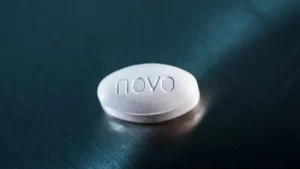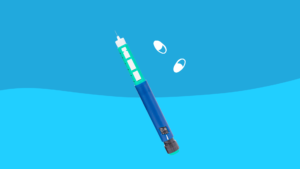Comparing Trulicity Vs Ozempic: Dosage and Differences
HOME | DIABETES EDUCATION | COMPARING TRULICITY VS OZEMPIC; DOSAGE AND DIFFERENCES
As diabetes management evolves, comparing Trulicity and Ozempic is of growing interest. Both medications are GLP-1 receptor agonists, offering outcomes in blood sugar control and weight management.
Understanding dosage, administration, and potential efficacy differences is crucial for informed decision-making in diabetes treatment. Insight into these aspects can aid in selecting optimal treatment regimens for type 2 diabetes.
Key Takeaways
- Trulicity and Ozempic are both once-weekly subcutaneous injections used for diabetes management.
- Ozempic may be more effective than Trulicity in lowering average blood sugar levels.
- Both medications have common side effects such as nausea, vomiting, diarrhea, abdominal pain, and constipation.
- It is important to consult with healthcare providers to discuss potential side effects, drug interactions, and determine the most suitable medication for diabetes management.
Overview of Trulicity and Ozempic
Trulicity and Ozempic are both once-weekly subcutaneous injections indicated for the treatment of high blood sugar levels in individuals with type 2 diabetes. Trulicity contains dulaglutide, while Ozempic contains semaglutide as the active ingredient. Both medications work by stimulating insulin production, reducing sugar production in the liver, and slowing down digestion as incretin mimetics.
Research suggests that Ozempic may be more effective than Trulicity in lowering average blood sugar levels and promoting weight loss. Common side effects of both medications include nausea, vomiting, diarrhea, abdominal pain, and constipation.
Trulicity is FDA-approved for adults and children 10 years and older, and Ozempic is FDA-approved for adults with type 2 diabetes. It’s important to consult healthcare providers regarding the differences, including cost and potential side effects, to make an informed decision.
Efficacy in Blood Sugar Control; Trulicity Vs Ozempic
Trulicity and Ozempic are both once-weekly subcutaneous injections used to treat high blood sugar levels in adults with type 2 diabetes. Research suggests that Ozempic may be more effective than Trulicity in lowering average blood sugar levels and promoting weight loss.
Trulicity can reduce HbA1C by 0.7% to 1.8%, while Ozempic can decrease HbA1C by 1.2% to 2.1%. Both medications have been shown to lower the risk of major adverse cardiac events. However, they may also lead to side effects such as nausea, vomiting, diarrhea, abdominal pain, and constipation. It is important to consider these factors when determining the most suitable diabetes medication for individual patients.
At low and high doses, semaglutide was superior to dulaglutide in improving glycaemic control and reducing bodyweight, enabling a significantly greater number of patients with type 2 diabetes to achieve clinically meaningful glycaemic targets and weight loss, with a similar safety profile.
https://www.thelancet.com/journals/landia/article/PIIS2213-8587(18)30024-X/fulltext
Administration Methods
Both Trulicity and Ozempic are administered as once-weekly subcutaneous injections. The injections can be given in the stomach, upper arm, or thigh for both medications. Trulicity comes in a package of four single-dose pens, while Ozempic comes as a single pen with four doses for the month.
The dose for both medications may be increased gradually every four weeks for optimal blood sugar control. These administration methods offer convenience and flexibility for patients, allowing them to self-administer the medication in different injection sites. The prefilled pen injectors also aid in accurate dosing and minimize the risk of errors.
Duration of Action in the Body: Is Ozempic Better than Trulicity?
| Ozempic | Trulicity |
|---|---|
| 7-8 days | Approximately 72 hours |
Common Side Effects of Ozempic and Trulicity
Understanding the common side effects of Ozempic and Trulicity is crucial. Common side effects include nausea, vomiting, diarrhea, abdominal pain, decreased appetite (Trulicity), constipation (Ozempic), and injection-site reactions.
Rare but serious side effects may include pancreatitis, kidney problems, severe allergic reactions, and an increased risk of thyroid tumors. It’s important to discuss potential side effects with a healthcare provider when using these medications for diabetes management.
Potential Drug Interactions; Ozempic Vs Trulicity
When using Trulicity or Ozempic with other medications, it’s important to understand potential drug interactions to ensure safe and effective management of type 2 diabetes. Both Trulicity and Ozempic may interact with other diabetes medications, leading to low blood sugar.
They can also affect the absorption of certain oral medications. Discussing all medications with healthcare providers is crucial to prevent harmful interactions. Additionally, there is a possibility of serious side effects such as pancreatitis, kidney problems, and vision changes with both Trulicity and Ozempic.
Consulting healthcare providers to understand the potential drug interactions of Trulicity and Ozempic is highly recommended for the safe and effective management of type 2 diabetes.
Weight Loss Side Effects of Trulicity and Ozempic
Trulicity and Ozempic are both associated with weight loss as a potential side effect. When comparing the weight loss effects of Trulicity and Ozempic, it’s important to consider the following:
- Ozempic may be more effective for weight loss compared to Trulicity based on studies.
- Ozempic and Trulicity may contain different active ingredients and mechanisms that contribute to weight loss.
- Weight loss effects of Ozempic and Trulicity may vary from person to person.
These medications are not FDA-approved for weight loss, but their potential to aid in weight reduction is an important consideration for individuals with type 2 diabetes. It is crucial to consult healthcare providers to discuss the potential for weight loss while using Trulicity or Ozempic.
Dosage Guidelines; Trulicity or Ozempic for Treating Type 2 Diabetes
Trulicity and Ozempic have specific dosage guidelines for treating type 2 diabetes. Trulicity is typically started at a dose of 0.75 mg once weekly, which can be increased to 1.5 mg once weekly as needed. On the other hand, Ozempic is usually initiated at a lower dose of 0.25 mg once weekly for four weeks, followed by an increase to 0.5 mg once weekly.
For individuals needing further glycemic control, the dosage may be further increased to 1 mg once weekly. Healthcare providers should assess each patient’s specific needs and response to the medications to determine the most suitable dosage for managing type 2 diabetes effectively.
Conditions Treated by Ozempic or Trulicity
Trulicity and Ozempic are prescribed to manage type 2 diabetes and reduce the risk of cardiovascular problems in adults with this condition. Specifically, they are used for the following conditions:
- Type 2 diabetes in adults
- Reduction of cardiovascular risk in adults with type 2 diabetes and heart disease or multiple cardiovascular risk factors
- Improving blood sugar levels in adults with type 2 diabetes
These medications are essential in treating type 2 diabetes and addressing associated cardiovascular risks.
Cost Comparison: Cost of Ozempic vs Trulicity
When comparing the cost of Trulicity versus Ozempic, the out-of-pocket cost for a month’s supply of Trulicity is around $930, whereas Ozempic is similar at about $935. Both medications offer free coupons and patient assistance programs, and the copay will vary based on individual insurance plans. To better illustrate the cost comparison, see the table below.
| Medication | Monthly Cost |
|---|---|
| Trulicity | $930 |
| Ozempic | $935 |
It’s important to consult your healthcare provider or pharmacist to determine your monthly cost for either drug, considering potential variations in insurance coverage.
How Effective are Trulicity and Ozempic
Trulicity and Ozempic effectively lower hemoglobin A1C levels in type 2 diabetes. Ozempic potentially offers a slightly higher reduction as the dosage increases. Both medications can lower the risk of major adverse cardiac events (MACE), but Ozempic provides a higher risk reduction compared to Trulicity in people with established heart disease.
Trulicity and Ozempic may contribute to weight loss, and a higher-dose version of Ozempic called Wegovy is specifically approved for weight loss. Ozempic may offer slightly better outcomes regarding blood sugar control and cardiovascular risk reduction.
Frequently Asked Questions
Are There Any Specific Dietary Restrictions or Recommendations While Taking Trulicity or Ozempic?
While taking Trulicity or Ozempic, it’s advisable to maintain a balanced diet to support blood sugar control. Specific dietary restrictions are not prescribed; however, consulting a healthcare provider for personalized dietary recommendations is recommended.
Can Trulicity or Ozempic Be Used in Combination With Other Injectable Diabetes Medications?
Trulicity and Ozempic can be used with other injectable diabetes medications like insulin. Consult healthcare providers for personalized treatment plans and to monitor potential interactions.
What Should I Do if I Miss a Dose of Trulicity or Ozempic?
If a dose of Trulicity or Ozempic is missed, it should be taken as soon as possible, unless the next scheduled dose is within 3 days. In that case, the missed dose should be skipped and the regular dosing schedule resumed. Always consult a healthcare professional for personalized advice.
Can Trulicity or Ozempic Be Used in Patients With a History of Pancreatitis?
Trulicity and Ozempic are GLP-1 receptor agonists used to control blood sugar in type 2 diabetes. Patients with a history of pancreatitis should use caution and consult their healthcare provider before initiating treatment with these medications.
Are There Any Special Storage Requirements for Trulicity or Ozempic Injection Pens?
Both Trulicity and Ozempic injection pens should be stored in the refrigerator at 36°F to 46°F (2°C to 8°C) until the expiration date. Once in use, they can be stored at room temperature for up to 14 days, away from direct sunlight.



